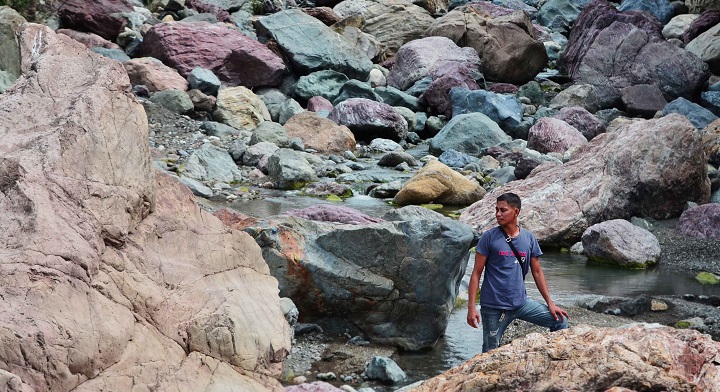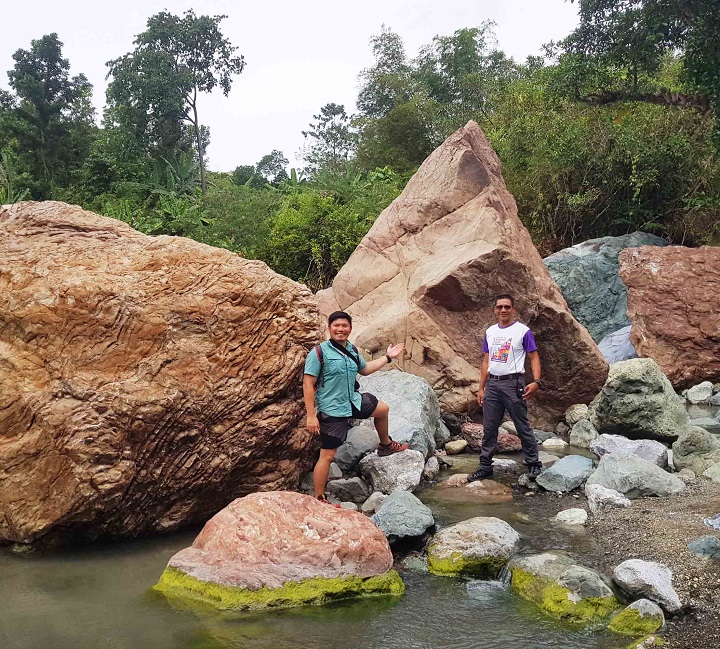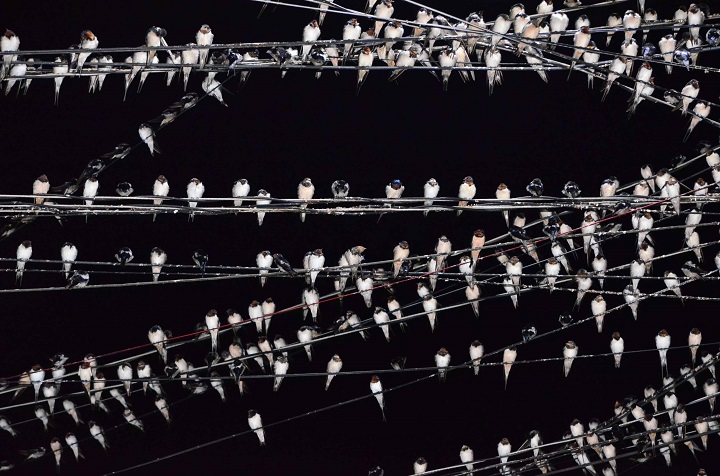
Peru is famous for its Rainbow Mountain, a mountain sporting hues of gold, green, and vermillion.
The Philippines might now have its own version, but with a wet twist. Instead of a Rainbow Mountain, it has a Rainbow River.
At the foothills of the Sibalom Natural Park in western Panay lies the Mau-It River. Known to generations of locals as an occasional source of semi-precious gems, it’s probably the most colorful river in the Philippines. Stones of every hue, texture, and shape have been washed down from the mountains and eroded over time.
There are striped, speckled and spotted stones. Smooth and rough stones. Stones that resemble petrified wood, some that spark when struck, and, some that crumble at a touch.
“The Mau-It River’s colorful stones are a product of ancient volcanic and tectonic movement,” explains geology enthusiast and Park Management Board Member Jonathan De Gracia. “The area is rich in minerals. However, as Sibalom is a protected area, picking of even small stones is not allowed.”
Locals, however, legally pick quality stones that have been naturally washed beyond the protected area’s confines. Hewn into beautiful gem trees made of wire and putty, they’ve become popular souvenirs, offered for as low as PHP300 (USD6) per piece.

The Rainbow River is just one reason to visit the Sibalom Natural Park, a 6,778.44-hectare natural park in Antique, a scenic, four-hour drive from the ivory sands and lapping waves of Boracay.
“Park guests can get a chance to see some of our ‘Big Five’ – the Visayan Spotted Deer and Warty Pig, Walden’s and Tarictic hornbills, plus of course the giant Rafflesia, the largest flower on Earth,” promises Sibalom Park Superintendent Anthony Evangelio. Rafflesia speciosa is known to occur solely on the island of Panay and was discovered in the mountains of the Sibalom Natural Park in 2002.
Tourism numbers have bounced back after the COVID-19 pandemic. Whereas the Sibalom Park hosted just 6,296 visitors in 2020, annual visits almost doubled to 11,080 in 2022.
Guests staying at the jumpoff town of San Jose Buenavista might also be treated to a unique spectacle. Tens of thousands of migrating Barn Swallows are currently roosting near the town center at a spot dubbed ‘Swallow City.’ The birds are attracted by droves of insects that in turn, are attracted by the town’s bright lights.

Yan / UNDP-BIOFIN)
“Western Visayan natural parks and protected areas have so much to offer,” adds Krisma Rodriguez, Department of Tourism Regional Director for Western Visayas. “This summer, we invite everyone to visit not just the Sibalom Natural Park, but our other tourist sites in our region.”
Since last year, tourists have been returning to the country’s Protected Areas. Philippine parks recorded 2,176,659 visits in 2022, almost thrice the 731,518 visits posted in 2020. Top draws were the Mabini Protected Land and Seascape in Davao and the Hundred Islands National Park in Pangasinan, each hosting over 300,000 visitors.

“We’re happy to see eco-tourists returning to our Protected Areas,” says DENR Biodiversity Management Bureau Director In concurrent capacity as Assistant Secretary for Policy, Planning and Foreign-Assisted and Special Projects Marcial Amaro, Jr. “Ecotourism helps promote biodiversity conservation in our national parks. It generates and sustains funds for the upkeep of our Protected Areas. We’re honored to host responsible tourists who might enhance their love for the environment by enjoying the natural beauty of our country and by supporting programs and activities inside our Protected Areas.”
Launched in May of 2022, the Year of the Protected Areas or YOPA is a yearlong campaign not just to educate people on the need to conserve Philippine protected areas, but to encourage them to visit the sites themselves. Ending this June 2023, YOPA hopes to generate funds from tourism to ensure continued management for areas hard-hit by the lack of visitors during the two-year COVID pandemic.
“We hope that a fresh generation of visitors can help us better manage and protect our rainbow rivers, lush forests and beautiful coasts,” concludes DENR-UNDP BIOFIN Project Manager Anabelle Plantilla.

